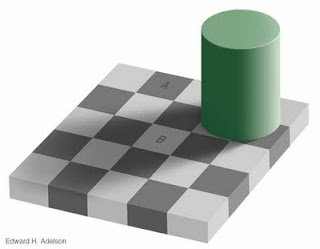 When creating a horror game an essential ingredient is the darkness. When in a dark spot people have a tendency to be far more simply spooked and have a far more vivid imagination, a genetic heritage passed on from our ancestors who had been hunted by predators at night. Taking advantage of this is important and just altering the light level of an environment can make a large distinction in the scare factor.
When creating a horror game an essential ingredient is the darkness. When in a dark spot people have a tendency to be far more simply spooked and have a far more vivid imagination, a genetic heritage passed on from our ancestors who had been hunted by predators at night. Taking advantage of this is important and just altering the light level of an environment can make a large distinction in the scare factor.Of course one can not just turn off the lights and hope to make a scary game. The player nonetheless want to be in a position to see some thing, as watching a pitch black image is not all that fascinating. The proper quantity of light also depends on the sort of environment and the type of events that will take place. If the environment is quite huge, then it may possibly require to be brighter, whereas smaller rooms, exactly where it is simpler to navigate, can be darker.
Added to this the player is generally equipped with some sort of lantern or flashlight to help illuminate. In Amnesia (and the penumbra tech demo) the player has a vague light about her to support make the closest surroundings more easy to see. Penumbra Overture and Black Plague had a large blue aid light when sneaking in darkness, although this had the difficulty of illuminating also much. Finally an additional trick is to add "fog" that gets blacker the longer the distance and this gives a the darkness a a lot more thick and oppressive feel. This was used to great impact in the very first Silent Hill game and gave the added visual effect of enemies emerging from the darkness a head of you.
When starting to implement this, a large issue appear: Darkness is Subjective! This indicates that a certain location willseem to have a diverse light level depending on who plays it and how it is played.
The first dilemma comes from the monitor itself and depend on:
- Light level of the space.
- Settings on the monitor.
As implied above, I think it is crucial to have a very good light level setup screen for a game (and would like it for motion pictures). For Penumbra we had an in-game gamma worth that could be tweaked and also a test image to calibrate against. There were nevertheless two big flaws here. First of all the judgment needed ("Make this screen barely visible") is a highly subjective! As an alternative we should have had some simpler and far more precise test and in Amnesia we will have two squares of various light levels, where 1 ought to be visible and the other not. This is far from best, but avoids some of the additional subjectivity. Secondly, gamma is not all there is to it: changing the contrast makes a big distinction and can make the calibration image fail. There is also the actual brightness to be alter which of course also make a huge difference. To make matters worse these 3 values (gamma, contrast and brightness) impact each other also.
The difficulties does not stop there although! It also turns out that the apparent light level alterations depending on the light atmosphere it is in. This illusion clearly illustrates the point:

Despite the fact that it is hard to believe, the squares A and B are of precisely the identical light level! A game example of this is in Silent Hill had been the background light level appears a lot darker when the flashlight is off than when it is on. This implies that when you setup your monitor to appear very good when flashlight is on, it appears as well bright when it is turned off. The game developers should really have decreased the ambient light when the flashlight was off in order to give the best effect. Yet another example is how a game can appear much darker when running in windowed mode due to the fact of a brightly colored desktop image (note: windowed mode typically do make a game objectivly darker, but this issue can add to the effect).
So how to solve this struggle amongst light and dark? For developers it is critical to often verify a settings screen and adjust gamma just before testing the lighting in a level. And to do this effectively there must off course be good tools for performing just that. Another important point is to usually try the light level of a map in distinct techniques. How does it appear when the flashlight is on, when it is off, what happens when the fog comes rolling in, and so forth. Adjustments in the atmosphere and gameplay can significantly have an effect on the perceived darkness which in turn can have great impact on the game's ambiance.
It is also upon the players to make positive that they set up properly just before playing. I have study a number of testimonials where the reviewer claimed that the game was too dark and one particular can wonder if they truly had set up effectively. 1 can also wonder if the makers of the game gave appropriate direction on how a good set up would be like! There wants to measures taken on both sides to assure that a game can attain its prospective to frighten.
How do you go about with setting up monitor gamma and so on? How significantly believed have you offered this in the previous?
No comments:
Post a Comment